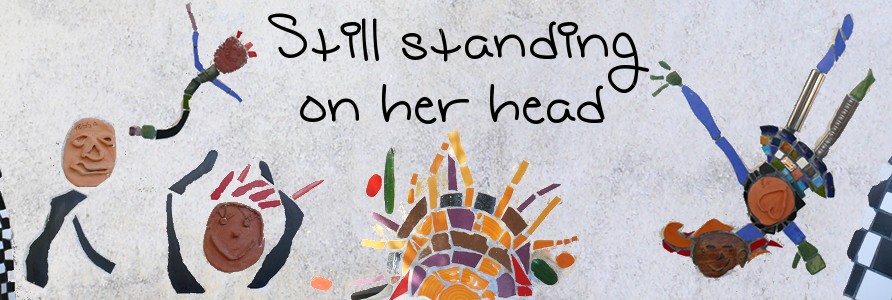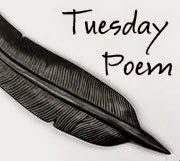Wednesday, March 29, 2017
New Zealand: The Quiet Spectacular, by Laurence Fearnley
New Zealand books are easy for me to obtain, and there's plenty of choice. I had gradually become aware of Laurence Fearnley as a writer I had yet to dip into, which seemed rather a lack, given that she has been writing novels, some of them award winning, for around twenty years. So I put my name on the hold list for her latest, "The Quiet Spectacular" at the library, and eventually it came round to my turn (the hold list being surprisingly long).
The book is set in the south of New Zealand, in an unnamed area clearly based on Dunedin, and on a rural dormitory town and wetlands slightly to the south of the city. Christchurch, where I live, also gets a mention as the childhood home of one of the main characters, and residence of her parents. I find when the setting is familiar, the reading experience is changed by the inevitable mental fact checking that goes on. I didn't find anything to quibble with (and the earthquakes of 2010 and 2011 inevitably got a small mention).
The book centres around three women. Loretta is a school librarian with two grown children, a soon to be teenaged son, a husband and an ex. She appears to be suffering some sort of mild mid-life crisis, and has embarked on a project to catalogue adventurous women in a book (imaginary or real) called "The Dangerous Book for Menopausal Women". Chance is a teenage girl whose goat farming father and brothers are interested only in go karts, while her mother is literary but cold and mentally cruel to her. Riva is an older women, who has given up a successful business making women's outdoor clothing in the United States, and returned to New Zealand where she is restoring and protecting a wetland reserve. Riva is mourning the death of her sister Irene, but has promised Irene that on the fourth anniversary of her death, she will do something spectacular to celebrate, and will then stop mourning her and get on with life.
These three women separately discover the wetlands, and a hut that Riva and Irene had built there, and eventually meet up. I found the variety of female characters interesting. Men are peripheral here. But though Riva says of men that she can "take them or leave them", it is not an anti-male book (the author, by the way, is a woman despite her male-sounding name). Chance's father, for instance, seems to be a good hearted person, in the glimpses we see of him, while her mother Trudy is not at all sympathetically drawn.
The book was interesting enough that I felt I would like to explore Fearnley's earlier work - in particular, "The Hut Builder" which won the fiction section of the 2011 New Zealand Post Book Awards.
Labels:
Laurence Fearnley,
New Zealand,
world reading
Wednesday, March 22, 2017
Japan: The Goddess Chronicle, by Natsuo Kirino
Some countries have too many fine authors to choose just one book. So, even though I had already read a book from Japan for this project, I decided that The Goddess Chronicle looked interesting enough that I would read another. Even if it means the project will take longer overall (I suspect I will choose extra books from a number of other countries, too).
The Goddess Chronicle is based on the Japanese legend of the gods Izanami and Izanagi. In the first part of the book, two sisters are born into the family of the Oracle on a small island which I suspect from the description is located somewhere in the area of Okinawa. They are inseparable, until, on her sixth birthday, Kamikuu is chosen to be the next Oracle, in succession to her grandmother, and enters a rigorous training. When the grandmother dies some years later, and Kamikuu takes over her role, her younger sister Namima discovers that she is to be the priestess of darkness, and live in isolation at the island's cemetery.
Namima who has fallen in love with a young man, Mahito, rebels against this role. Together the two lovers escape the island. But things don't work out as Namima had hoped. Namima finds herself in the underworld serving the goddess Izanami, but she wishes to return to the island for revenge.
I'm not sure how much of the book is drawn from the original legend, but I suspect that portions of the latter part of the book come from the original myth, and that the story of Namima and Kamikuu is the author's own invention. Natsuo Kirino has written a number of earlier books, chiefly crime fiction. This novel, too, is rather dark, in a much more mythic way. I found it quite spellbinding, and read it quickly, as it was hard to put down. However the parts near the end that appeared to be traditional were a little harder to follow at times than the parts that seemed original. The modern mind, perhaps, is a little less foreign than the centuries old legends.
Labels:
Japan,
Natsuo Kirino,
world reading
Monday, March 13, 2017
Haiti: The World is Moving Around Me, by Dany Laferrière
Reading has slowed down a bit lately as we have been very busy at my workplace. In addition, I've been catching up on some of the books from my "to be read" list other than those for my world reading project - but hope to get back to some world reading soon.
By internet searching, I had a small but interesting looking list of novelists from Haiti, all women: Yanick Lahens, Edwidge Danticat (although she left the country at a young age), Marie-Vieux Chauvet, Évelyne Trouillot. When it came to our local library, however, apart from some children's books by Edwidge Danticat, all I could find was Laferrière's "I Am a Japanese Writer" as an e-book, and in paper format, his memoir of the Haiti earthquake.
Although Laferrière left Haiti as a young man and settled in Canada - as a journalist he was at grave risk from the then brutal dictatorship. However, at the time of the earthquake of January 12, 2010, he was in Port au Prince for a literary festival. This memoir is his account of the days that followed, before he was evacuated out to Canada by the Canadian embassy, and again when he returned to visit his family for the funeral of his aunt.
Although some 200,000 people died in the devastating earthquake, he does not dwell on that so much as describe the way in which life continued. And the background of Haitian culture that he describes is one of pride in a nation that was the first in the world, in 1804, where black slaves managed to shake off the rule of white men and form their own self determining nation. The narrative of the earthquake is fragmentary, in short, descriptive passages, and evocative. "We say January 12 here the way people say September 11 in other places" he writes. In Christchurch where I live, we refer to September 22 - our own earthquake of September 22, 2011. And though far fewer lives were lost here than in Port au Prince, and the devastation was not nearly as great, nevertheless, many passages had a resonance for me.
Laferrière pins down the reason why novels from some countries are so hard to find for this project:
"What art form will be the first to come forward after the earthquake? Poetry, so impulsive, or painting, eager for new landscapes? Where will the first images of the earthquake be seen? On the city walls or the bodies of tap-taps?... The novel demands a minimum of comfort that Port-au-Prince can't offer; it's an art form that flourishes in industrialized nations."
While I still hope to read some of the novels mentioned above, I'm glad I chose this one first. I found it a very readable insight into the country and the people, giving more depth than reportage of events in the newspapers.
By internet searching, I had a small but interesting looking list of novelists from Haiti, all women: Yanick Lahens, Edwidge Danticat (although she left the country at a young age), Marie-Vieux Chauvet, Évelyne Trouillot. When it came to our local library, however, apart from some children's books by Edwidge Danticat, all I could find was Laferrière's "I Am a Japanese Writer" as an e-book, and in paper format, his memoir of the Haiti earthquake.
Although Laferrière left Haiti as a young man and settled in Canada - as a journalist he was at grave risk from the then brutal dictatorship. However, at the time of the earthquake of January 12, 2010, he was in Port au Prince for a literary festival. This memoir is his account of the days that followed, before he was evacuated out to Canada by the Canadian embassy, and again when he returned to visit his family for the funeral of his aunt.
Although some 200,000 people died in the devastating earthquake, he does not dwell on that so much as describe the way in which life continued. And the background of Haitian culture that he describes is one of pride in a nation that was the first in the world, in 1804, where black slaves managed to shake off the rule of white men and form their own self determining nation. The narrative of the earthquake is fragmentary, in short, descriptive passages, and evocative. "We say January 12 here the way people say September 11 in other places" he writes. In Christchurch where I live, we refer to September 22 - our own earthquake of September 22, 2011. And though far fewer lives were lost here than in Port au Prince, and the devastation was not nearly as great, nevertheless, many passages had a resonance for me.
Laferrière pins down the reason why novels from some countries are so hard to find for this project:
"What art form will be the first to come forward after the earthquake? Poetry, so impulsive, or painting, eager for new landscapes? Where will the first images of the earthquake be seen? On the city walls or the bodies of tap-taps?... The novel demands a minimum of comfort that Port-au-Prince can't offer; it's an art form that flourishes in industrialized nations."
While I still hope to read some of the novels mentioned above, I'm glad I chose this one first. I found it a very readable insight into the country and the people, giving more depth than reportage of events in the newspapers.
Labels:
Dany Laferrière,
Haiti,
world reading
Subscribe to:
Posts (Atom)





